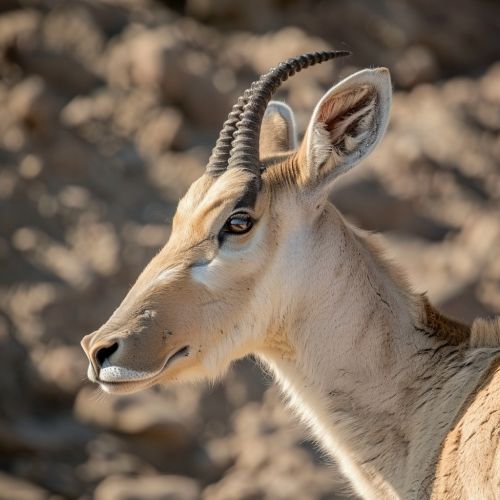Saiga Antelope
Taxonomy and Evolution
The Saiga Antelope (Saiga tatarica) is a critically endangered ungulate that belongs to the family Bovidae. The species is notable for its distinctive, bulbous nose, which has evolved to filter out dust and regulate temperature in the harsh environments it inhabits. The Saiga's evolutionary history is traced back to the Pleistocene era, where its ancestors roamed across the Eurasian steppe alongside woolly mammoths and saber-toothed cats.


Description
Saiga Antelopes are medium-sized, with a shoulder height of 60-80 cm and a weight of 26-69 kg. They have a light brown to yellowish coat in summer, which transitions to a dense, white coat in winter for thermal insulation. The most distinctive feature of the Saiga is its unique nose, a humped, trunk-like structure that hangs down over the mouth. This nose is flexible and inflatable, aiding in the animal's respiration in different seasons.
Distribution and Habitat
Historically, the Saiga Antelope was found across the vast Eurasian steppe zone, from the British Isles through Central Asia to Alaska. Today, their range is drastically reduced, with populations confined to Kazakhstan, Russia, and Mongolia. They inhabit open dry steppe and semi-desert environments, where they are well-adapted to endure extreme temperatures and low levels of precipitation.
Behavior and Ecology
Saiga Antelopes are nomadic and migratory animals, known for their mass migrations that are triggered by seasonal changes. They form large herds that can number in the tens of thousands, particularly during the rutting season. Saigas are herbivorous, feeding on a variety of plants including grasses, herbs, shrubs, and lichens. They are preyed upon by wolves, foxes, and birds of prey.
Conservation Status
The Saiga Antelope is listed as Critically Endangered on the IUCN Red List. The species has undergone one of the most rapid and severe population declines of any mammal in recent history, primarily due to overhunting, habitat loss, and disease outbreaks. Conservation efforts are ongoing, with initiatives focusing on anti-poaching measures, habitat protection, and population monitoring.
